This 1904 Coventry Humberette is a London to Brighton Run favourite
Posted by Chris Graham on 13th October 2023
Zack Stiling spotlights a 1904 Coventry Humberette; a very capable and reliable performer that’s very popular on the London to Brighton Run.
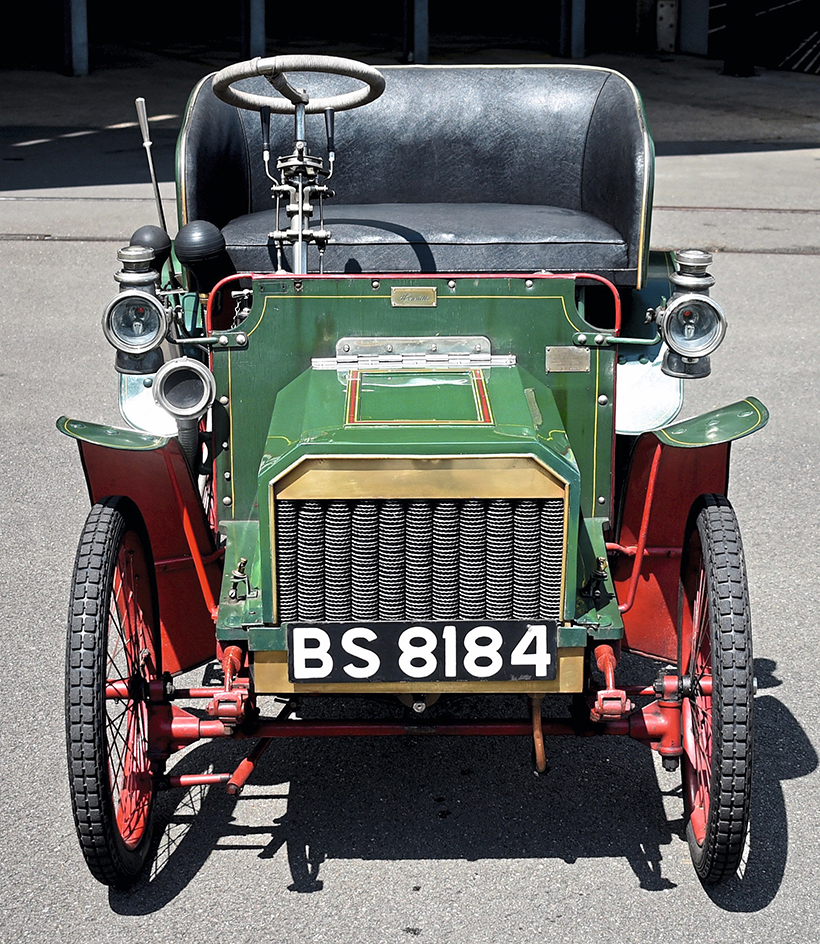
This 1904 Coventry Humberette is a tiny car, at only four feet wide.
Since the war, the Humber name has been synonymous with long, dark saloons ferrying politicians and stockbrokers around town, or cruising up the A1 to an important business meeting, some company director seated in the back behind a copy of The Times, sinking into its sofa-like bench seat. It hardly needs to be said, though, that one of the oldest players in Britain’s automotive industry had rather more humble beginnings, and the tiny Humberette of 1903 probably did more than anything else to make its name as a car-maker.

Its simple, tubular steel construction reflects Humber’s bicycle-making experience.
Prior to the automobile age, Humber was already well-known, having risen to prominence as a cycle-maker during the great Victorian bicycle boom alongside Rover, Singer, Sunbeam, Hillman, Herbert & Cooper, et al. As the internal combustion engine started to take off, it was a natural progression to install one inside a bicycle frame, which Humber did in 1896, and thereafter became a maker of fully-fledged motorcycles.
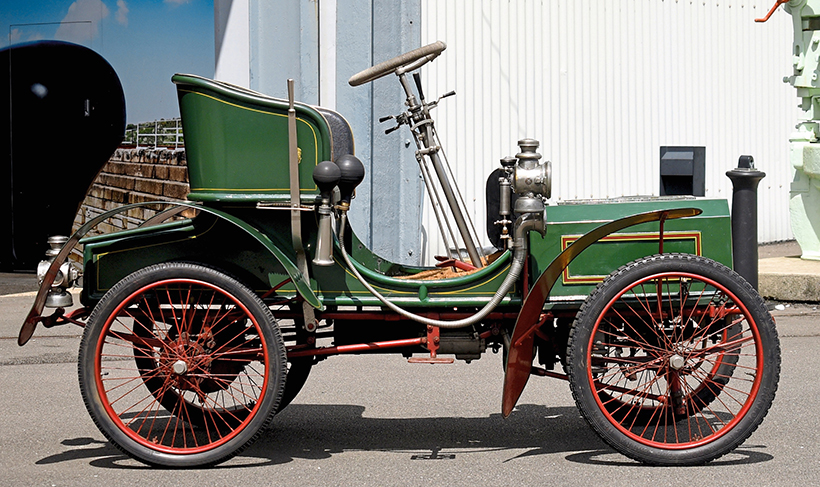
At just 7ft 10in long, it occupies less space than a Smart car!
Apart from an experimental electric car of 1895, Humber’s first cars also appeared in 1896, as series car production was only just getting off the ground in Britain. The Three-Wheel Motor Carriage was not an original design, however, but a licensed copy of the French Léon Bollée forecar. Some quite eccentric new models appeared later, including the Motor Sociable on the Bollée frame and the front-wheel drive, rear-wheel-steered MD Voiturette of 1900. Humber did not put a conventional design into production until 1901, with 4½hp single- and 9½hp twin-cylinder De Dion-engined models, and a Louis Coatalen-designed 12hp four.
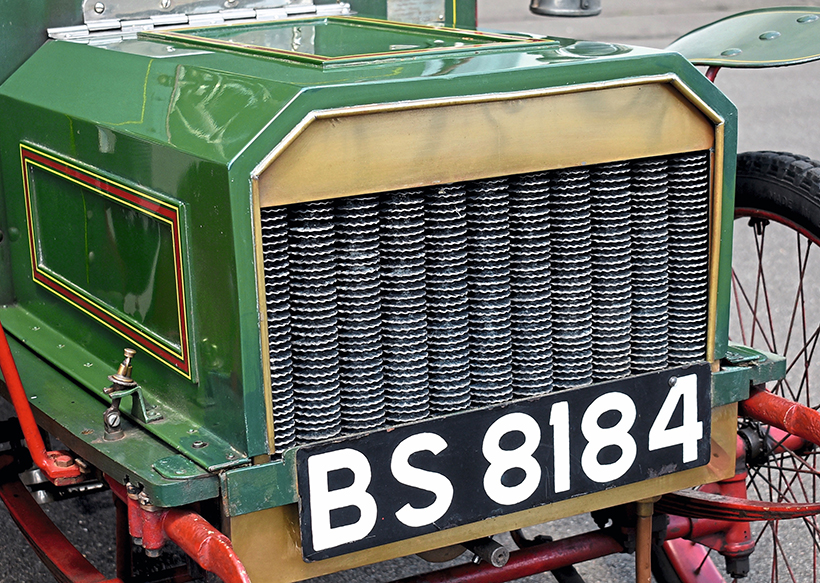
The attractive brass radiator almost caused Adrian’s retirement from his first Brighton run, when it split open.
The 12hp was popular enough to continue into 1903, by which point Humber’s earlier focus on light cars was clearly abandoned, as it was joined by an expensive 20hp. A 9hp three-cylinder prototype was built but did not reach production. The scene is now set for the arrival of the 5hp Humberette, which, along with the Olympia Tandem, a motorcycle with a front subframe supporting a wooden or wickerwork chair, accounts for most of the oldest surviving Humbers. It arrived midway through the year, the introduction of a ‘two-seated car at a popular price’ having been announced some months previously. Hailed in the 13 June edition of The Autocar as ‘a very smart-looking little car’ which showed under mechanical examination that ‘the design and its execution had been thoroughly well considered,’ it summarised it as ‘a very practical little car that will meet a very general demand.’

The seating for two is simple but comfortable.
The water-cooled vertical single-cylinder engine was of ‘square’ design, both bore and stroke being 35/8in, giving a total capacity of 613cc. Strong similarities between it and the De Dion Bouton single are not likely to be coincidental, but unlike the De Dion engine the Humberette’s rotates anti-clockwise. With coil-and-battery ignition and a Longuemare carburettor, it produces 5hp at 1,500rpm and uses a friction-clutch transmission, with two available speeds plus a reverse. Shaft-drive transfers the power to the live rear axle. As per the norm for the time, a pedal operates a band brake on the propshaft, while a hand lever works double band brakes in drums at the rear wheels.
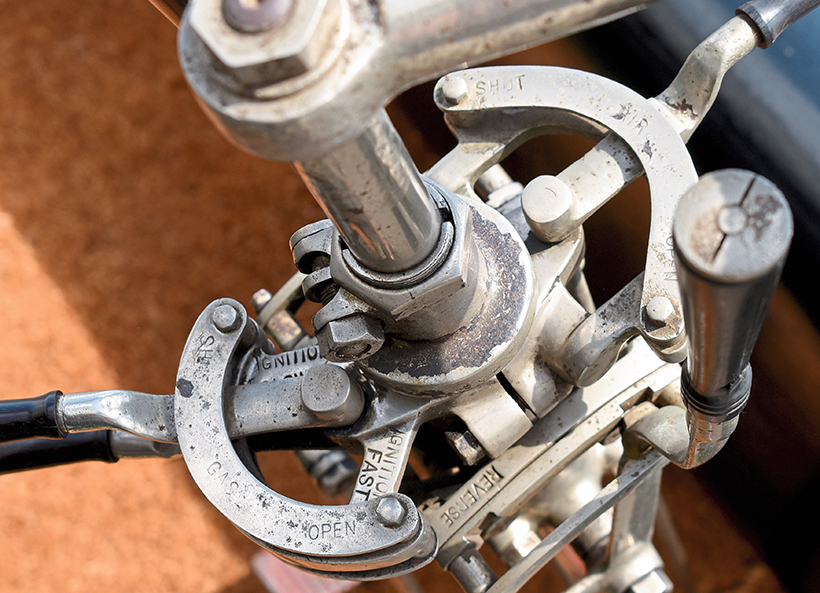
Most of the driver’s controls, including throttle and gear selectors, are hand-operated levers.
The other pedal operates the clutch, with all the driving done on the hand throttle. The distinctive single-spoke steering wheel was so designed to afford the best possible access to the hand controls, which also adjust the ignition advance and choke. The forward and reverse gears are also controlled by levers on the steering column. Reflecting Humber’s origins as a bicycle-maker, the car was assembled around a lightweight tubular steel frame, with D-section tubing used for the skeleton of the body. With a wheelbase of 5ft 3in, track of 3ft 6in, and overall dimensions of 7ft 10in length and 4ft width, it’s 10 inches shorter and 13 inches narrower than a Smart car. It uses 28-inch steel-spoked wheels which originally wore 2½in Clipper Continental tyres, and it weighs next to nothing at 5¼ cwt.
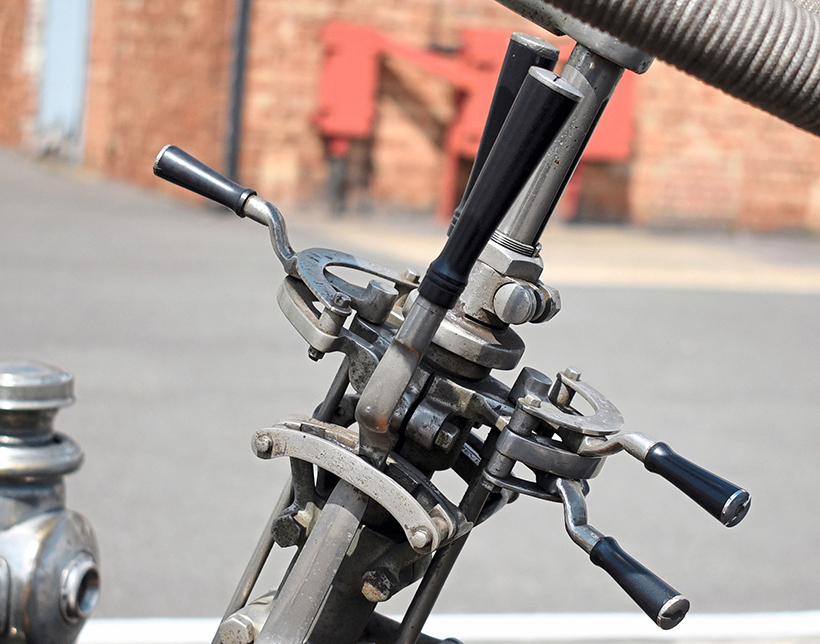
The unusual, single-spoke wheel is supposed to make the levers easily accessible.
After closing its Wolverhampton works in 1900, Humber still had two factories in Coventry and Beeston, Nottinghamshire. At launch, it was announced that the standard Humberette would be made in Coventry and sold for 125 guineas, while a luxury model with bucket seats, side doors, an engine governor and other refinements would be built at Beeston and cost 140 guineas. Both were significantly cheaper than their voiturette rivals from Wolseley or De Dion Bouton.
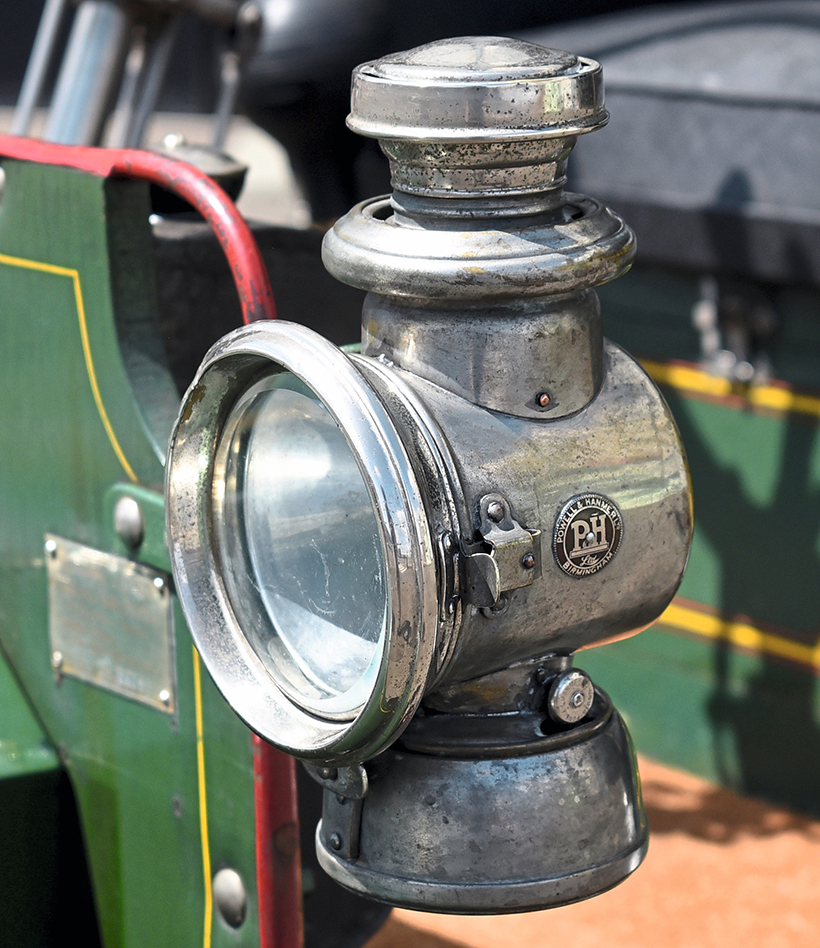
The patinated nickel lamps are by Powell & Hanmer of Birmingham.
From the large number of survivors, it should be obvious that the Humberette was received rapturously. Five hundred had been sold by the end of 1903, including 190 of the upmarket Beeston models. Sensing it was onto a good thing, in January, 1904, Humber presented an even more upmarket companion, the Royal Humberette. The chief difference with this was that the piston stroke was extended to 4in, increasing total power output to 6½hp at 1,500rpm. A third gear was gained, giving a top speed of 25mph.

Adrian says that the Lucas horn gives an effective warning of his approach.
According to magazine reports of the time, the body was made wider and could accommodate a folding hood, side doors were standard and the rear wings were extended down to the steps. It received a new radiator and a fixed starting handle. The detachable handle used on cheaper models had apparently been known to fly off upon starting…
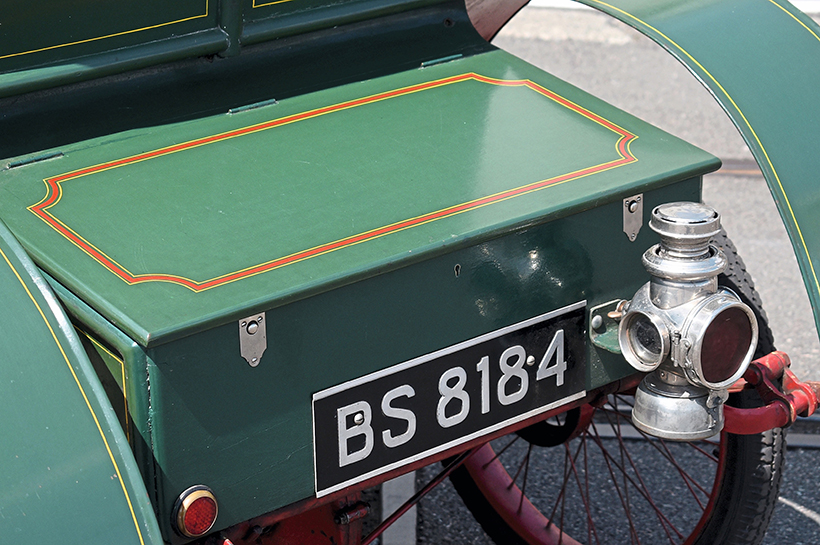
There is luggage space, although there’s room for little besides tools and roadside emergency equipment.
As well as all these improvements, the Beeston-built cars at 160 guineas were still built to a higher standard but differed most obviously in their use of wooden artillery wheels, whereas Coventry’s 6½hp, at 150 guineas, retained cycle-type wire wheels. A further development was revealed at the Automobile Show at Crystal Palace in February, 1904, when Humber exhibited a Beeston 6½hp with a ‘cabriolet canopy’, i.e. a three-light detachable roof with a hinged windscreen and roll-up side curtains. The price of such luxury came to 200 guineas. The last Humberettes were manufactured in 1906.
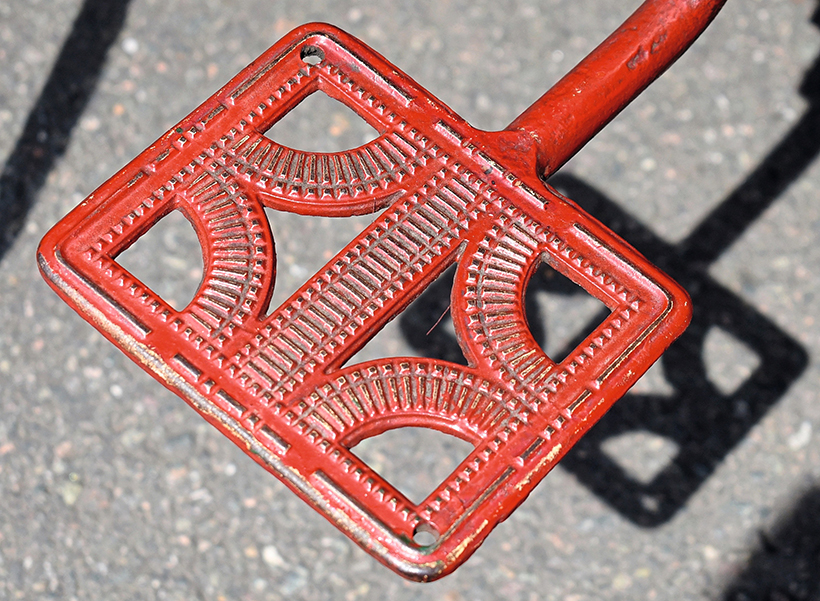
The decorative pattern in the step is typical of late-Victorian and Edwardian manufacturing.
Adrian Herbert is the owner of the pretty 1904 5hp Coventry Humberette gracing these pages. Adrian is known in commercial vehicle circles as the restorer of the sole-surviving ex-Maidstone & District 1912 Hallford omnibus, and for undoubtedly being one of the leading authorities on Hallford vehicles. The restoration of the bus was a Herculean effort started in 1983 and not completed until 2010, during which time he had no other veteran or vintage vehicles to keep him busy so, when it was finished, he went off in search of something different.

A reliable Zenith has replaced the original Longuemare carburettor.
“I wanted a veteran car,” Adrian says, “but I didn’t want to restore one. It had to be a Brighton Runner – it had always been an ambition to go on the Brighton Run – and it had to be British, and fortunately there are quite a lot of Humberettes. It’s amazing how that number has survived because they’re quite flimsy, with a motorbike-style tubular chassis and motorbike wheels.”
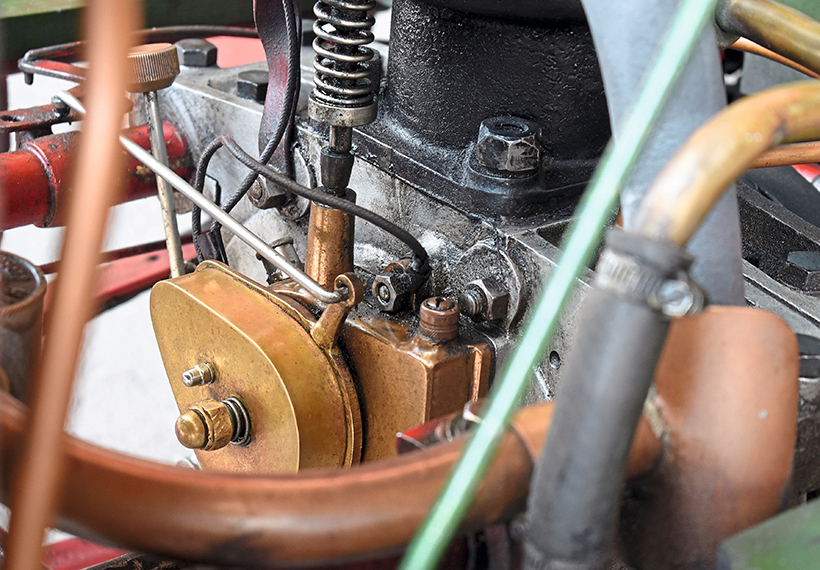
The 613cc, single-cylinder engine is rated at 5hp, but a 6½hp version was also available.
Adrian found his Humberette, car number 303, for sale with Gavin McGuire. Its history is known from 1956, when it was owned by George T Gibson of John Gibson & Son, the coachbuilding firm of Jameson Place, Edinburgh. Commercially, the company seems to have specialised in ambulances, including a couple of horse ambulances for the Scottish Society for the Prevention of Cruelty to Animals. Outside of work, the family were great enthusiasts for veteran cars, owning a 1902 Arrol-Johnston dogcart among other vehicles. At the time, the Humberette still carried its original Norwich registration of CL 63. A logbook shows that by 1965 it was owned by George Strathdee Jr of Cults, near Aberdeen, who appears to have had some connection to Gibsons as he also owned their old Arrol-Johnston.
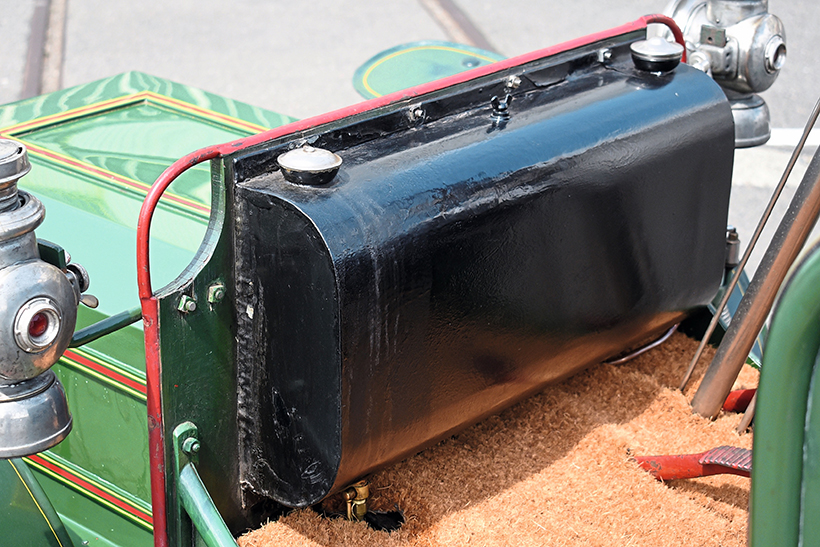
There is no need for instruments – the dash simply holds the fuel tank and nothing else.
Strathdee still owned the Humberette in 1978 but sadly, sometime around 1989 or 1990, its original number was stripped and it was reregistered BVH 655A. It was sold in 1990 through Surrey vintage-car dealer Stephen Langton Ltd. to John and Melanie Tompkins. With the Tompkins, it gained its present age-related number BS 8184 and was regularly entered in the Brighton up to 2009. In the early 90s, it received a mechanical restoration from Nigel Parrott, although cosmetically it retains the pleasingly jaunty look of a post-war restoration.
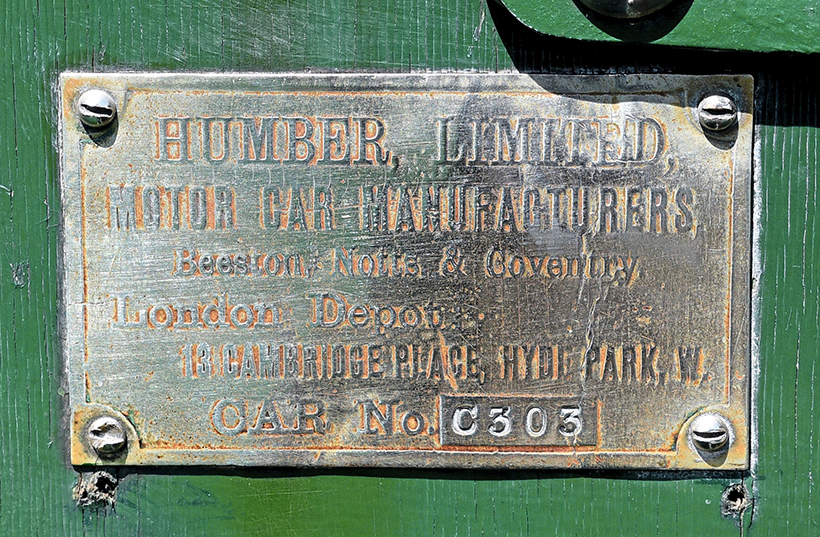
A simple plaque records this Humberette’s identity as car number 303.
As bought by Adrian, it was all ready for the Brighton, so he wasted no time in entering it for the 2010 run. Though both car and driver were well-prepared, these things are never guaranteed to go perfectly smoothly. As Adrian recalls, “With Bob Moorman as passenger, we set out from Hyde Park and managed to get a good run to the halfway halt. We experienced a bit of overheating, so we were topping up the radiator. It wasn’t until Clayton Hill that the radiator completely split and the valve stuck open. I went to a café to get water for it, only to get to the top of the hill and lose it all in a cloud of steam.
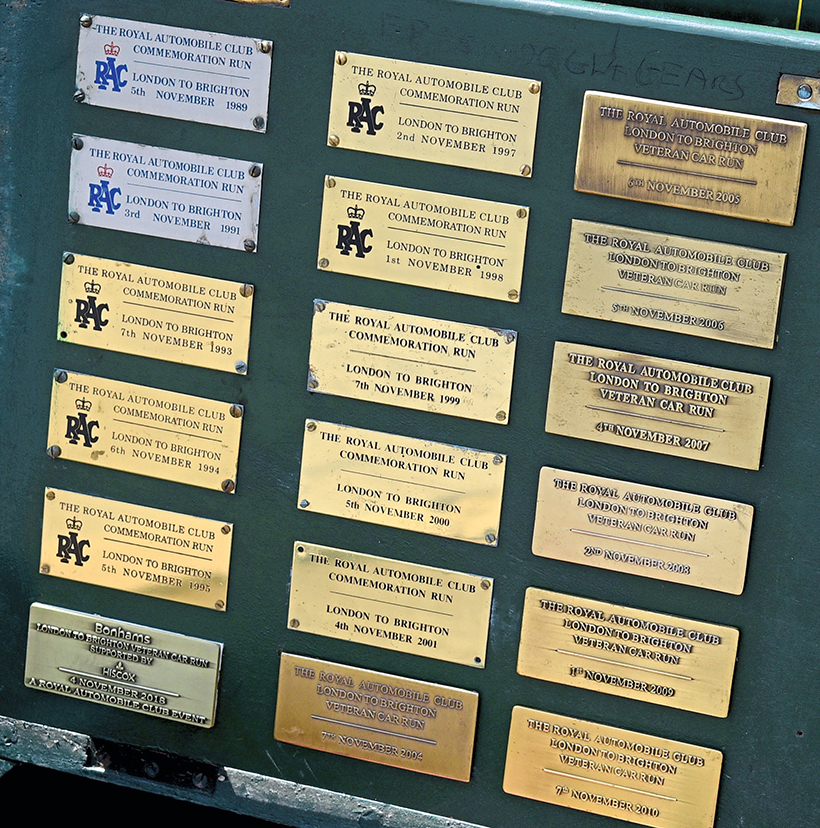
A large collection of plaques boasts of the Humberette’s many Brighton finishes.
“I coasted it down to a petrol station at the bottom and started our rescue bid. The entire bottom of the radiator had split so I had to put copious amounts of gaffer tape along the bottom and take the valve out and clean it up, but I didn’t have the necessary equipment until we flagged down an RAC van which had WD40 and wire wool, so we could get the valve working. We managed to get compression, looked at each other in amazement, looked at our watches and went like a bat out of hell into Brighton and got to the Preston Park finish within one minute of it closing.”
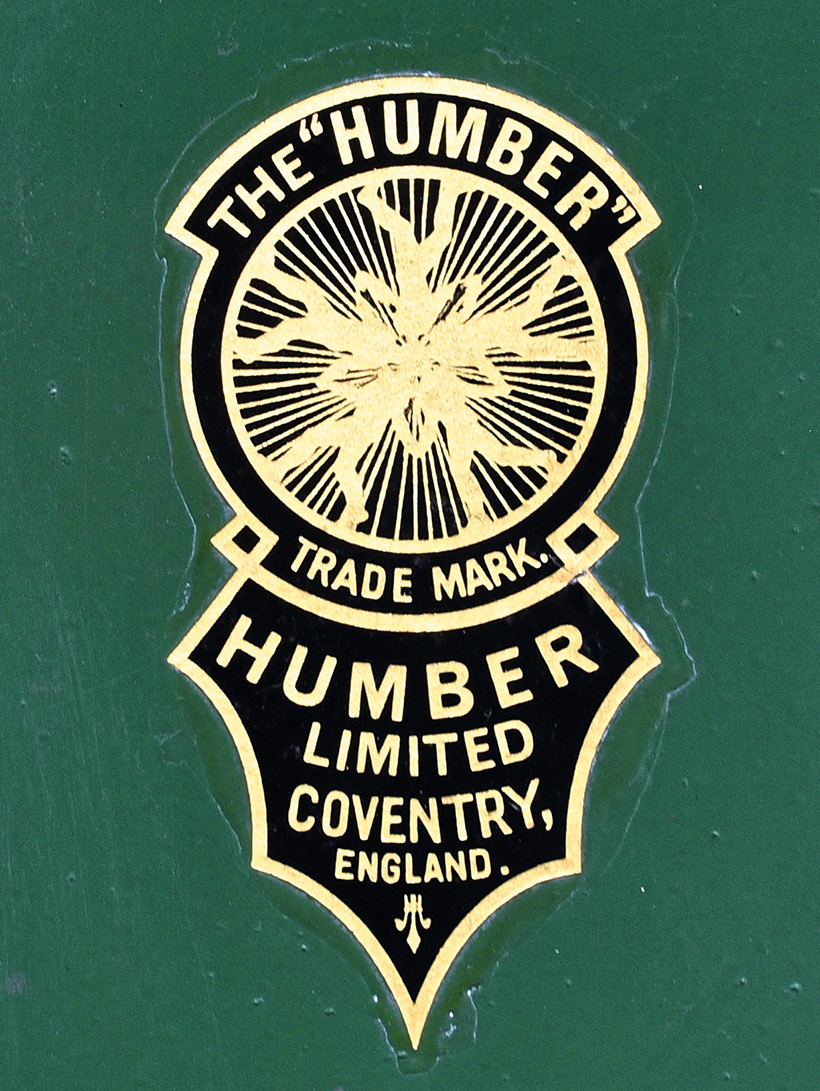
Humber’s distinctive badge was first seen on Victorian bicycles.
On another occasion, Adrian was forced to pull over in Brixton to investigate a violent rattle that had suddenly started from the engine. This was an inconvenience, but Adrian’s annoyance was nothing compared to that of the tramp sleeping at the bus stop, who had a few choice words to say after being woken by the horrendous clattering. “A screw had come loose on the crank,” Adrian explains. “It was rattling underneath and hitting the piston as it was flying around. I managed to replace the grub screw, fill it with Loctite, and ever since it’s not been a problem.” Unfortunately, that was not a roadside repair and marked the Humberette’s only retirement from the run during Adrian’s ownership.
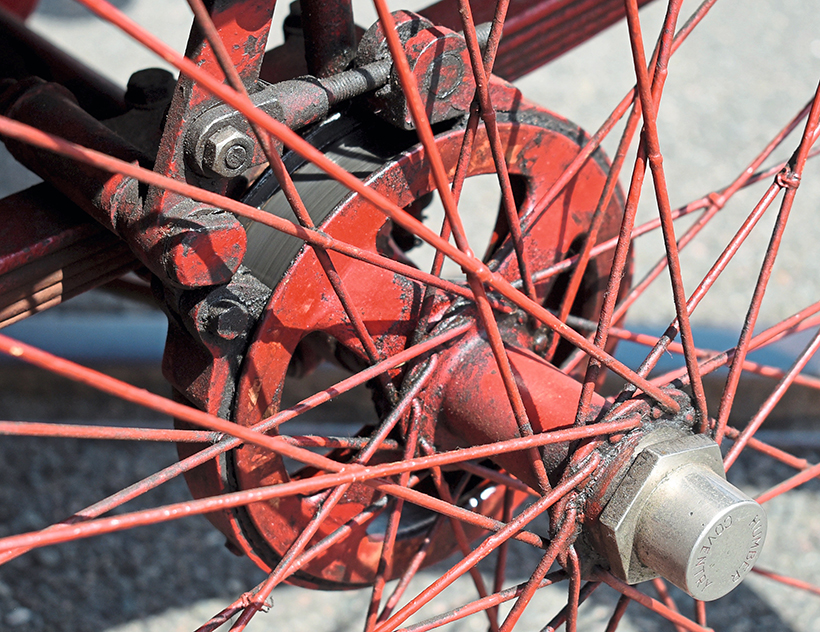
The rear-wheel band brakes are miniscule but “usually effective.”
Twelve years after his first run, Adrian ran again during the infamous deluge of 2022, taking his wife Elaine as passenger for the first time. Unlike many of the waterlogged cars, the Humberette wasn’t too fazed by the weather, although its run wasn’t completely trouble free. “We got to the M25 junction and the compression went and it cut out. Elaine held a brolly over me while I dismantled the valve gear, and we got compression just as the RAC turned up. We got to Brighton in pretty good time.”
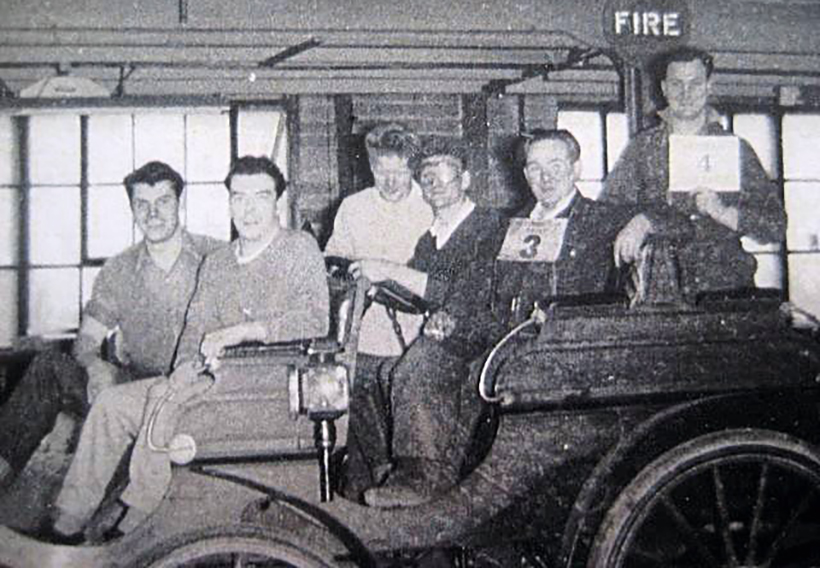
Workers at Gibsons aboard the 1902 Arrol-Johnston in the 1950s.
To drive the Humberette, Adrian praises its light steering, which is at odds with Bill Boddy’s comment about the Humberette having ‘the heaviest, least sensitive and highest-geared (only there are no gears) steering I have ever encountered.’ However, many Humberettes have been modified for lighter steering.
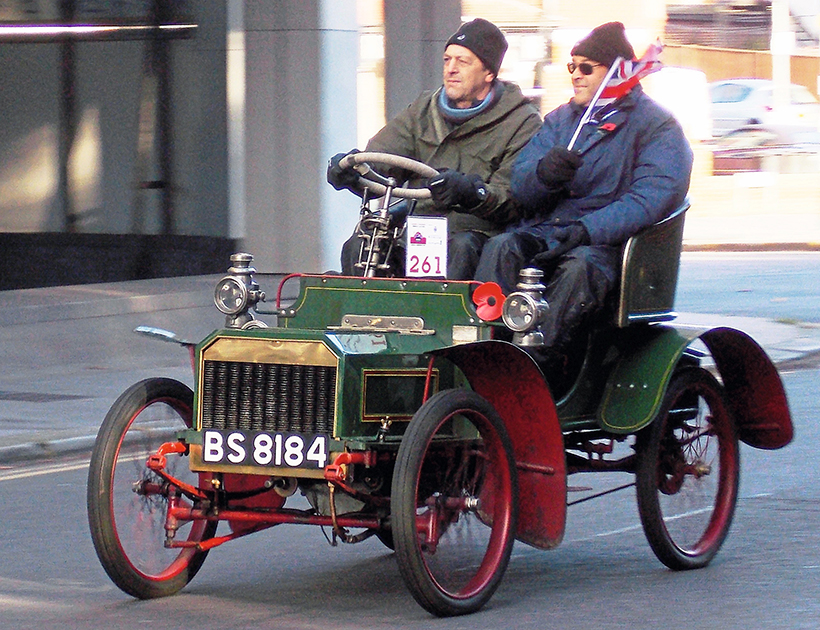
London to Brighton – Adrian Herbert and Bob Moorman whizz through Purley during the 2014 London to Brighton run.
Adrian continues, “Braking is usually effective. It’s a wing and a prayer when you’re on a steep hill, using both the handbrake and the transmission brake, but it does stop. The reverse linkage has been taken out as it used to jump into gear when you were going forward, and I think it did mess up the gears previously. It’s not keen on hills, but it will attempt to get to the top and usually does with a little help. As it’s a two-speed, you have to creep up the hill in the lower speed, then when you get onto a straight you can build up to 20mph plus. When you get to the other side and go downhill, that’s when it all gets interesting. All your arms and legs are on the brakes…
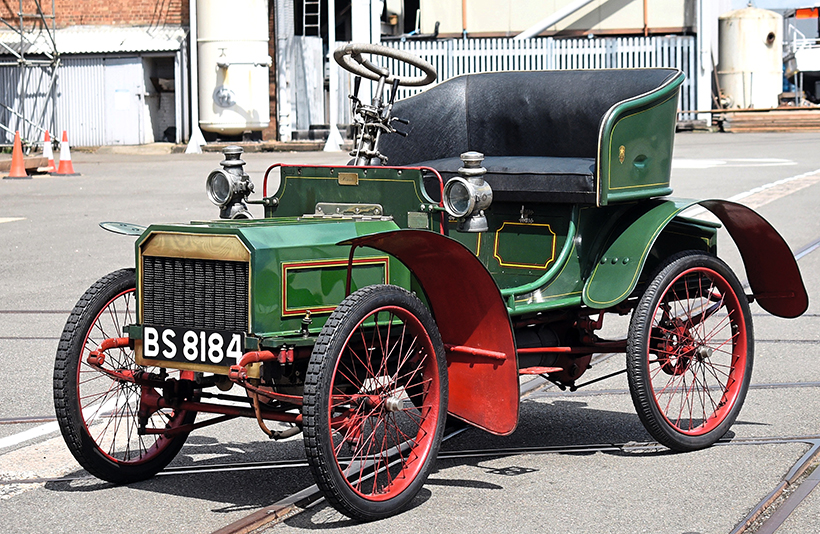
It’s a pretty little car which sold in very large numbers.
“The gears are pretty simple. It’s a simple clutch movement, then you can slide it into gear as long as you’re at the right speed. It doesn’t like changing down if you’re going too fast. You have to keep a check on the oil levels in the gearbox and diff because, no matter what you do, you do tend to lose some. As it’s got no fan, if you’re sitting in traffic it does tend to overheat and you tend to see steam and frothy water coming out of the radiator. It doesn’t like modern traffic when you’re in a jam, but apart from that it runs fine. It’s comfortable and not too bouncy. The most important thing’s the hooter, which is Lucas, and that’s pretty loud!”
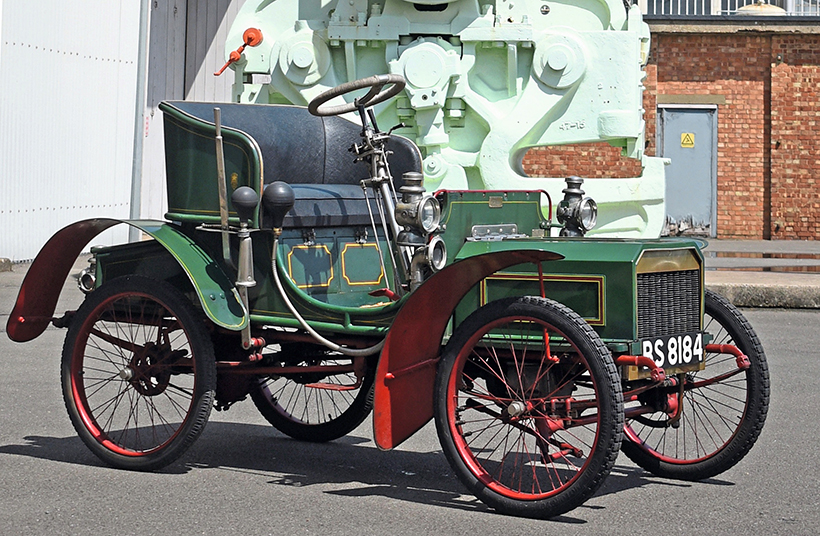
This 1904 example made a perfect first veteran for Adrian Herbert.
Despite those few little mishaps mentioned earlier, Adrian and the Humberette have successfully completed 10 Brightons since 2010. Although it’s small, it’s a capable and dependable car, and we expect to see it on Madeira Drive once more when this year’s Brighton rolls around.
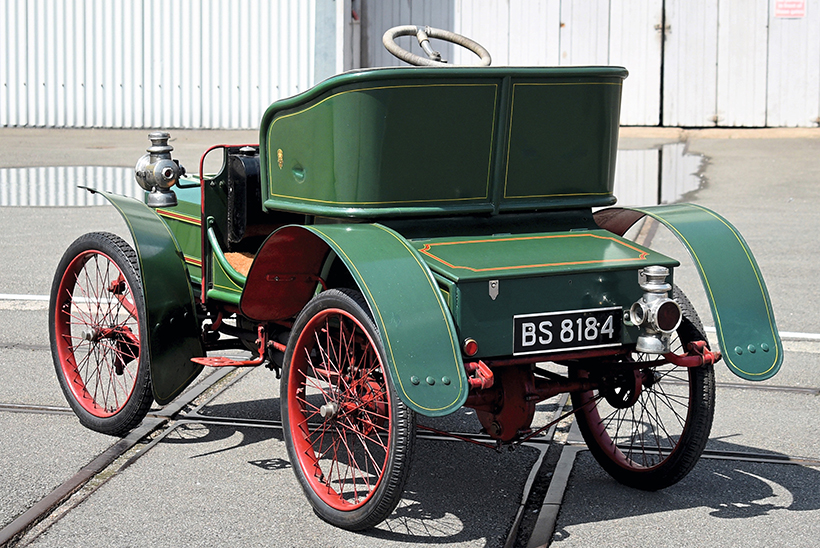
With its jaunty green paint job, this Humberette has been a familiar sight on the Brighton Run since 1989.
This feature comes from the latest issue of Old Glory, and you can get a money-saving subscription to this magazine simply by clicking HERE

Previous Post
Celebrating Marshall’s 175th anniversary in style!
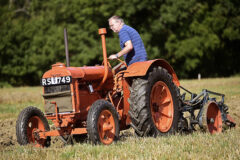
Next Post
1938 Fordson Standard N rescued from a wood



